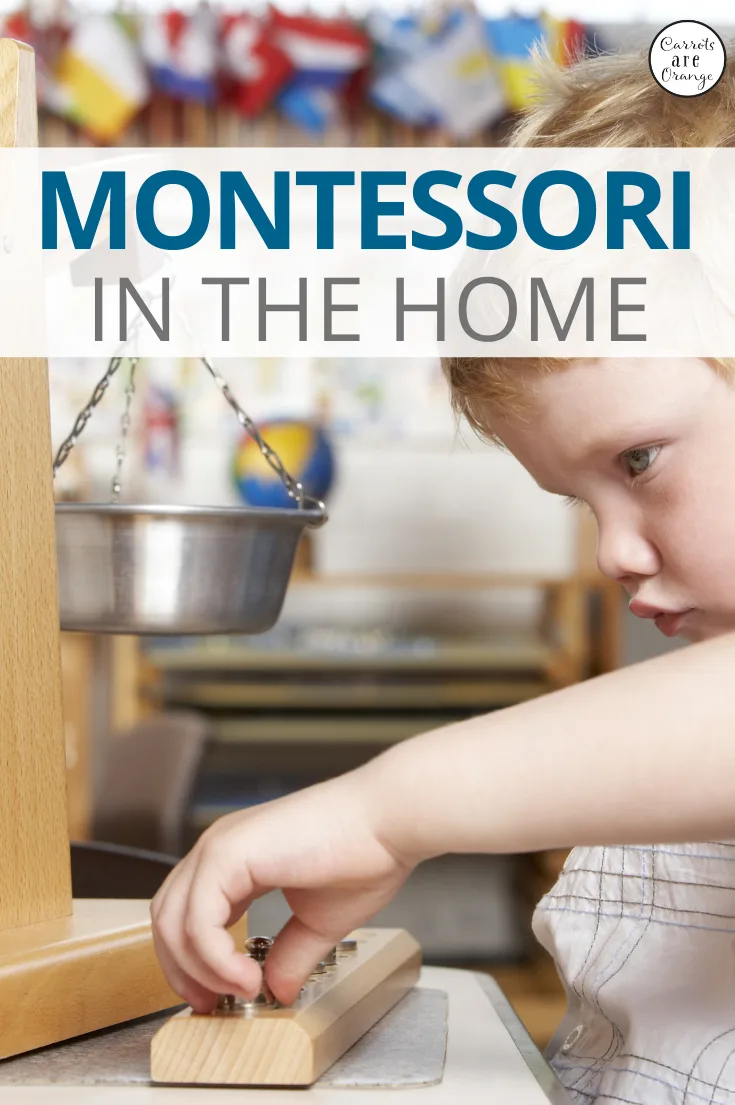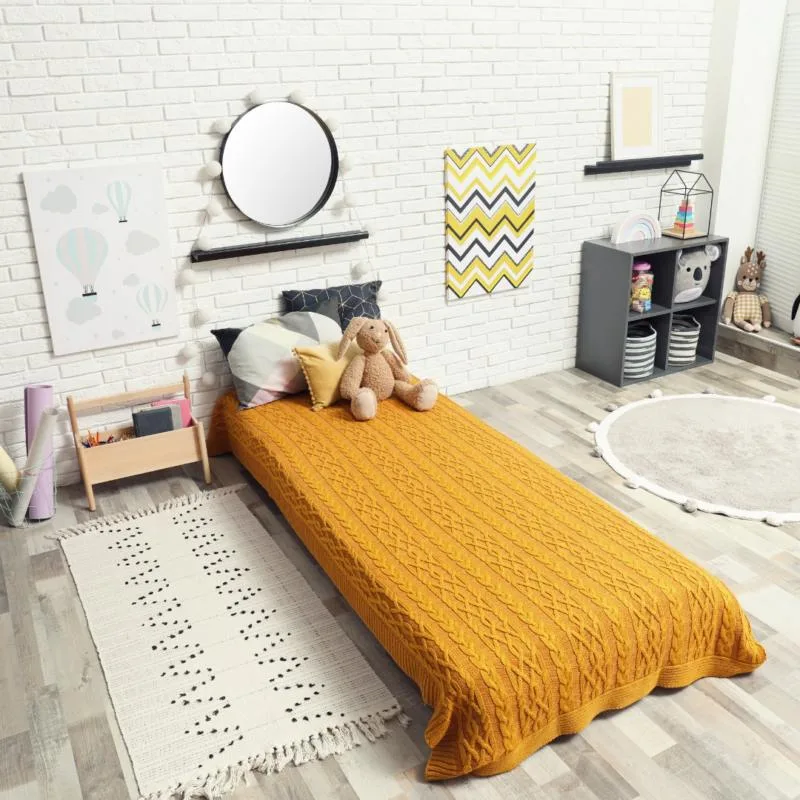Montessori at Home is an approach to education that takes inspiration from the Montessori method, which was developed by Maria Montessori. The Montessori method emphasizes hands-on learning, independence, and respect for a child's natural development.
When implementing Montessori principles at home, the goal is to create an environment that promotes exploration, self-discovery, and the development of essential life skills.
I discovered Montessori when I began researching school options for my oldest son. It was an article about Dr. Maria Montessori. I remember the moment, sitting at my laptop as my son napped one overcast afternoon. Montessori at Home seemed like an obvious next step.

I realized immediately that Dr. Montessori’s philosophy is exactly how my mother raised me. The Montessori theory more than resonated with me.
It made sense to me. It seemed second nature to me. Getting certified seemed a natural next move.
Soon I began a Montessori training program and applied the Montessori method in our home. Montessori ideals make children more engaged and inquisitive while encouraging a lifetime love of learning without making them feel forced to learn.
Key principles and strategies of Montessori at Home:
- Prepared Environment: Create a space that is organized, accessible, and aesthetically pleasing for your child. Arrange materials and activities in a way that allows your child to independently choose what they want to work on.
- Freedom of Movement and Choice: Allow your child to move freely around the house and select activities that capture their interest. Provide a variety of activities that promote learning across different areas, such as practical life skills, sensorial exploration, language development, mathematics, and culture.
- Practical Life Skills: Encourage your child to engage in everyday tasks such as pouring, dressing, cleaning, and preparing food. These activities help develop fine motor skills, independence, concentration, and a sense of responsibility.
- Sensorial Exploration: Offer opportunities for your child to explore and refine their senses. Provide activities that involve matching, sorting, grading, and exploring different textures, smells, tastes, sounds, and visual stimuli.
- Follow the Child's Pace: Observe your child closely to understand their interests, abilities, and developmental stage. Adjust the materials and activities accordingly to meet their needs and challenge them appropriately.
- Respect for Concentration and Focus: Allow your child uninterrupted periods of concentration and focus when they are engaged in an activity. Avoid unnecessary interruptions or distractions during these times.
- Encourage Independence: Foster your child's independence by allowing them to do tasks on their own, even if it takes more time or the results may not be perfect. Provide child-sized tools and furniture to facilitate their autonomy.
- Language and Communication: Engage in conversations with your child, read books together, and provide a rich language environment. Use precise vocabulary and encourage your child's verbal expression.
- Outdoor Exploration: Spend time outdoors with your child, exploring nature, and engaging in physical activities. Allow them to connect with the natural world and learn from their surroundings.
Can Montessori be Done at Home?
Yes! Montessori at home is a unique way to bring the Montessori style of education into your home and is accessible. In a Montessori at-home setting, children are allowed to learn through exploration and discovery. Keep reading to discover ways to bring Montessori into your home!
How Do I Set Up Montessori at Home?
Below you will find big-picture Montessori ideas to provide a beginning to learn more about Montessori. You will find ideas for the kitchen, the playroom, and the bedroom, plus a lot more.

Why Montessori? What is Montessori in the Home?
Here are five essential traits your child will gain through the Montessorian Method:
- Responsibility
- Self Regulation
- Initiative
- Independence
- Confidence
The Montessori at-home environment is designed to promote independence, self-motivation, and critical thinking. Montessori at home is a great way to provide your child with an education that is both stimulating and challenging.
If you are interested in Montessori at home, you should keep a few things in mind. First, it is essential to create a Montessori at-home environment conducive to learning. This means providing plenty of opportunities for your child to explore and discover.
Second, you should be prepared to be flexible and adaptable in your approach to Montessori at home. This means being willing to adjust your schedule and routine as needed. Finally, be patient!
It takes time for children to change to the Montessori at-home lifestyle. With patience and perseverance, you can create a Montessori at-home environment that will provide your child with an education that is both rich and rewarding.

Using the Montessori principles in your home and daily life promotes challenging, self-paced, and joyful learning! Plus, there are the added benefits of an independent and confident child who leads his development. How powerful is that?
Montessori Principles
These posts give you a bit of big-picture 101 on the Montessori method.
- 5 Habits Every Montessori Parent Should Develop
- Montessori Theory: 4 Reasons Your Child Embraces Repetition & Develops Will in Montessori
- Two Secrets to Bringing Montessori into Your Home
- Montessori in the Home for Infants and Toddlers
- The Importance of Observation in Early Childhood
- 15 of the Best Montessori Quotes for Parents

Montessori Parenting
These posts offer a perspective on parenting with a Montessori overlay.
- Help Toddlers & Preschoolers Learn to Communicate Better
- How to Communicate with a Child During Conflict
- How to Resolve Conflict Between Children
- The Power of Positive Communication with Kids
- 9 Refreshing Ways to Positively Communicate with Kids
- Learn How To Communicate The Montessori Way
- Montessori Theory: What is Montessori Parenting & How Can I Make it Happen?
- Raising a Montessori Kid: 75 Easy Ways to Montessori Parenting

Montessori Environment
Preparing the environment is one of the most critical components of applying the Montessori method. These posts should, at the very least, guide the preparation of your Montessori environment.
When most people think of Montessori, they think of schools with classrooms full of materials specifically designed to encourage hands-on learning. However, the Montessori approach can also be applied at home.
A Montessori home environment is carefully designed to meet the child's needs with child-sized furniture. It is organized and clutter-free, with shelves within reach and labeled with pictures or words to grow. Materials are easily accessed, simple and natural. The materials are used for various purposes as the child grows and develops.

For example, blocks can be used for building towers or sorting by color. Most importantly, the child is free to move about and explore the environment at their own pace.
With its focus on independence and exploration, a Montessori home environment encourages a child to explore and lead their learning. It can be a great way to support your child's natural love of learning.
- Six Secrets to Creating an Amazing Montessori Environment
- A Guide to Designing Your Montessori Playroom
- The First Steps to Montessori at Home for Infants
- How to Create the Perfect Montessori Bathroom
- My All-Time Favorite Montessori Mobiles for Your Baby’s Room
- How to Simply Integrate the Montessori Method at Home
- How to Implement Montessori Without Breaking the Bank
- Two Secrets to Bringing Montessori into Your Home
- The Best Ways to Implement Montessori at Home {Food}
- Montessori in the Home for Infants and Toddlers

As you continue on this Montessori journey, remind yourself to be patient. Changing behavior and integrating a different philosophy on managing your home and being a family will take time.
Frustration will present itself, but you will also have triumphant moments. Celebrate and honor those moments, as fleeting or as defining as they may be.
Interested in learning more? Click here to learn more about the Montessori curriculum!
